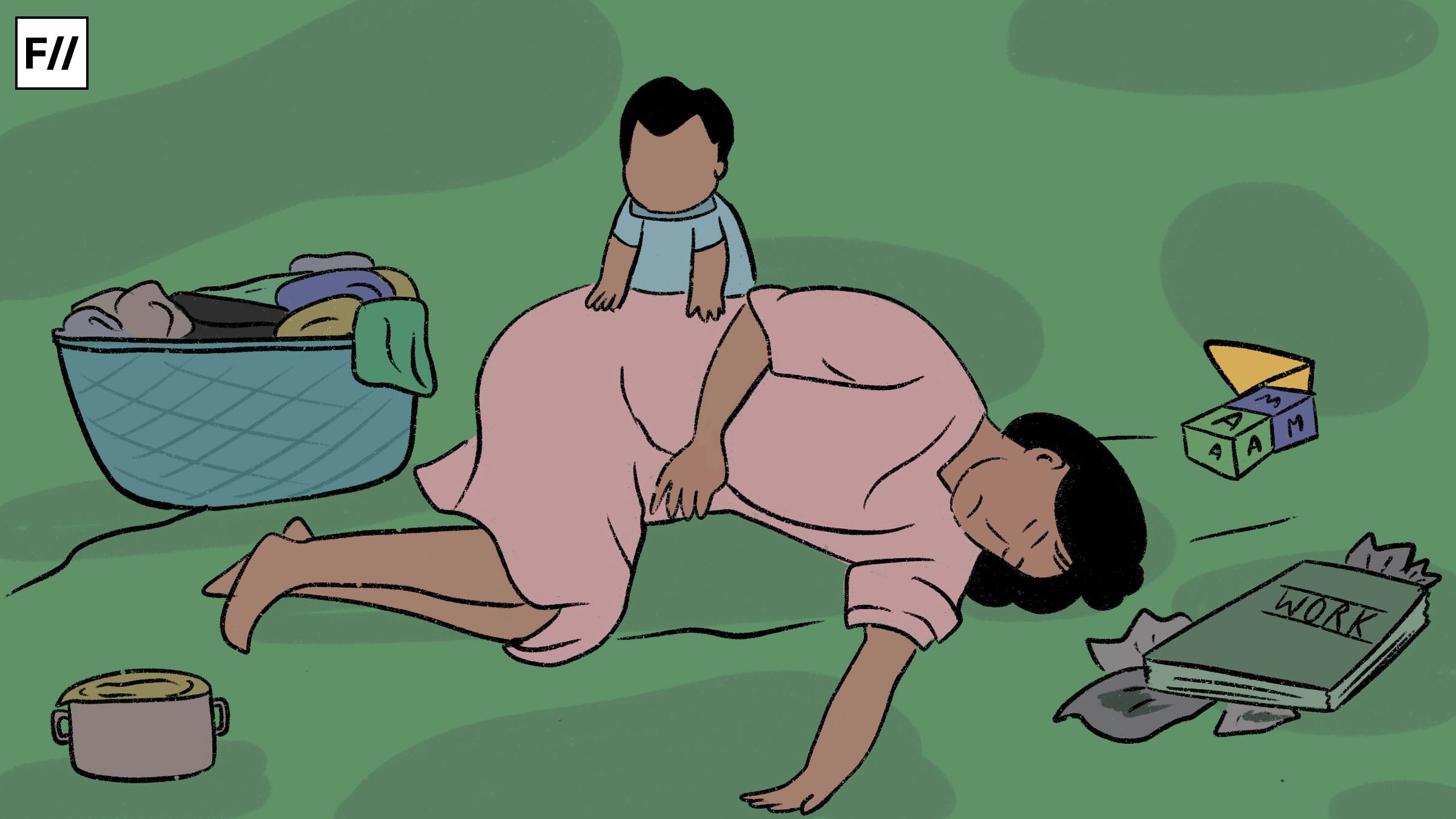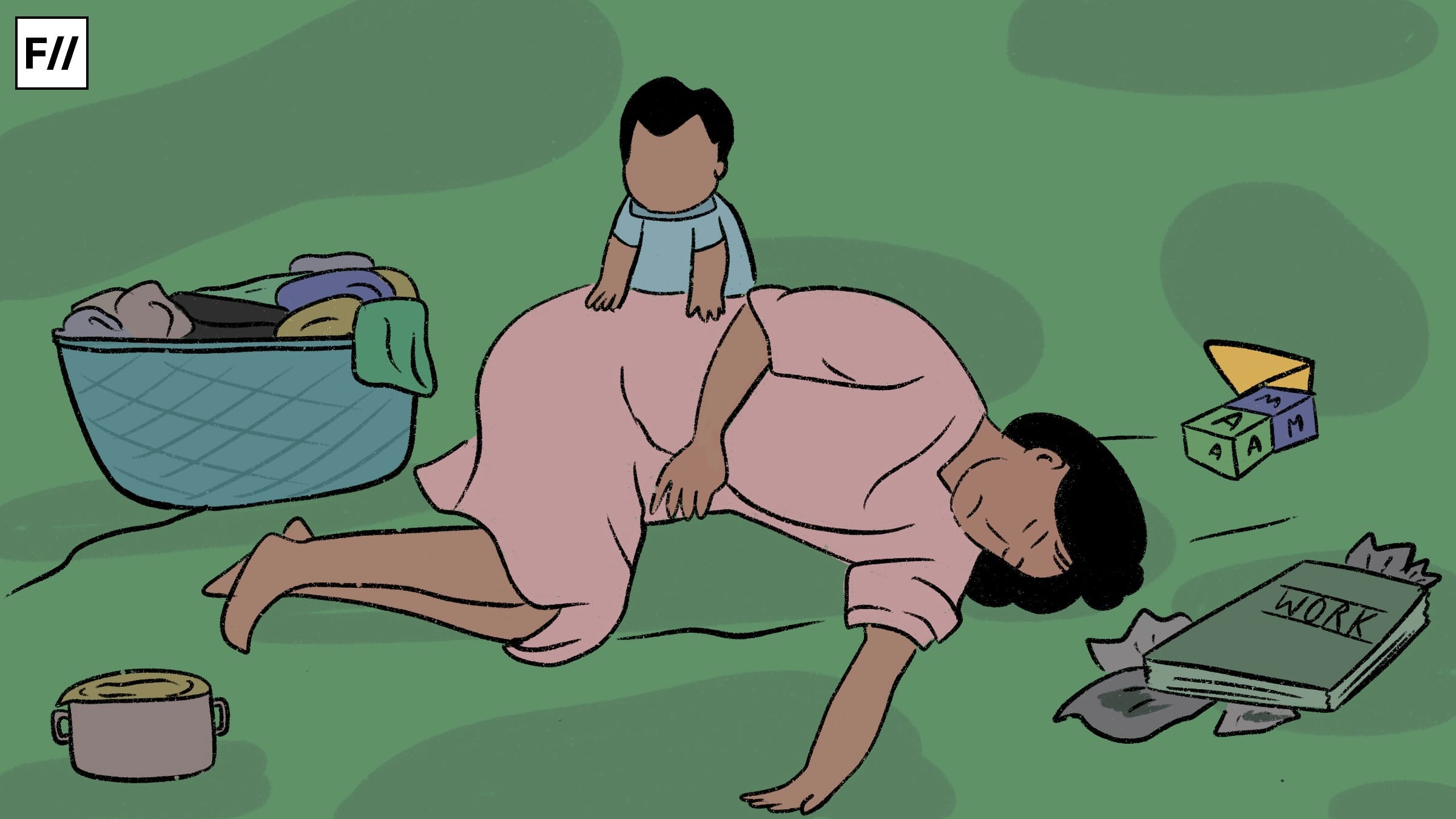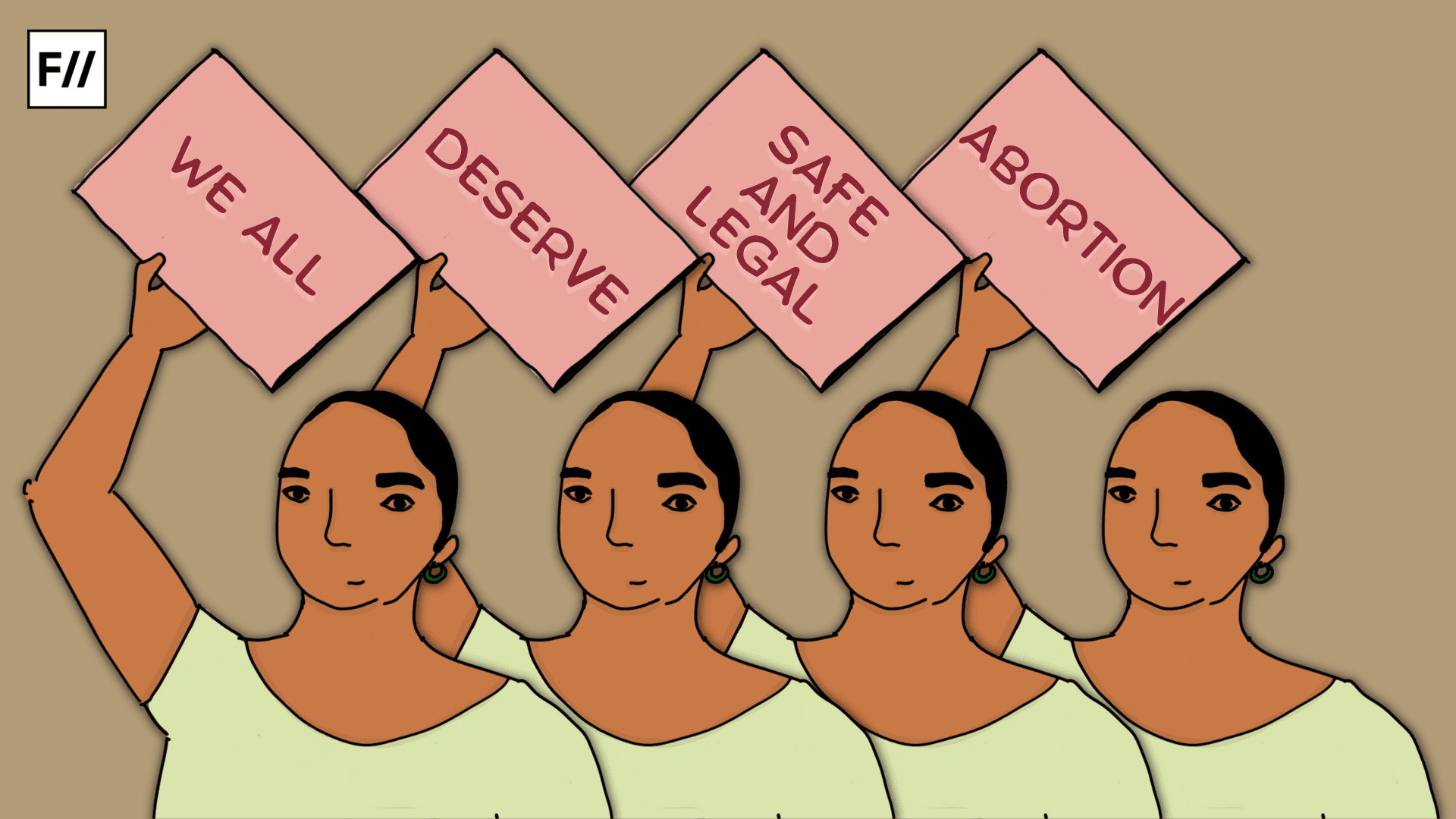Throughout human civilisation’s brief history, women’s value has been rooted in their reproductive ability. Yet the study and awareness about the effects and journey of women’s bodies continue to be shrouded in manufactured mystery. While the excitement and attention are trained on the delivery date and the journey before that, the recovery period is rarely discussed. We have heard edicts about how childbirth can cause pain tantamount to a broken bone. But once that hurdle is crossed, is the mother out of danger? What does the body go through after childbirth?
Often referred to as the fourth trimester – six to eight weeks after delivery, the body goes through a profound physical, emotional and social transformation, also known as the postpartum period. This, like most medical phenomena, is not a one-size-fits-all experience. Every new mother’s body takes its unique timeline of recovering from the physical trauma of reproduction. The mind often takes longer to heal and adjust.
Despite its critical importance, this period remains grossly under-discussed, poorly supported, and widely misunderstood, even in conversations around maternal health. The period building up to childbirth is majorly surrounded by anticipation, advice, and care – the aftermath. The lack of care in the aftermath reveals the social worth attributed to a woman. For many new mothers, what comes after birth is not just a time of bliss, but also one of exhaustion, vulnerability, and overwhelming change.
Postpartum in three phases
Medically, the postpartum period is commonly divided into three phases: the acute phase, the subacute phase and the delayed phase. This is when the body undergoes rapid shifts—uterine contractions help shrink the womb back to size, bleeding begins (known as lochia), and the risk of postpartum haemorrhage or complications from anaesthesia (in case of C-sections) remains high. This period calls for careful monitoring, but most healthcare systems, especially public facilities, forego this step. The underfunded and overloaded system often discharges mothers within hours of birth, due to limited infrastructure.
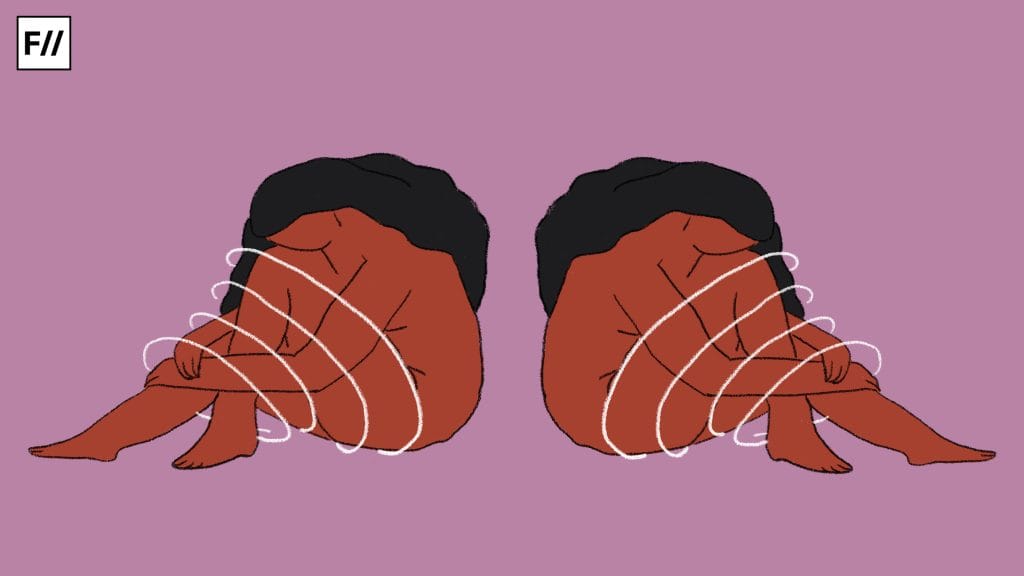
The first phase, the acute phase, begins within the first six to 12 hours after birth and is characterised by the body’s immediate response to the trauma of childbirth. Mothers face the highest risk of life-threatening complications during this period, such as postpartum haemorrhage, eclampsia, and other medical emergencies.
According to WHO, each year, about 14 million women experience PPH, resulting in about 70,000 maternal deaths globally. Healthcare providers would typically check vital signs, monitor bleeding, and assess swelling or signs of distress. Despite the elation and joy of childbirth, this is a very intense phase that needs care, wherein the goal is to stabilise the body and identify any immediate concerns.
After the acute phase, the subacute phase sets in, spanning from 24 hours to six weeks approximately. The risk of emergencies lessens during this phase, but it does not make it any less dramatic as the body undergoes rapid physiological changes. The most common issues that healthcare providers look out for during this period are cardiomyopathy (disorder of the heart muscles), postpartum depression, and urinary incontinence.
The uterus begins to contract back to its pre-pregnancy size in a process called “involution,” which can be accompanied by painful cramps, especially during breastfeeding. Vaginal discharge, also called lochia, changes colour and consistency as the body heals – from heavy bloody. This phase also includes the peak of hormonal fluctuations, which may result in heightened emotional sensitivity, fatigue, and shifts in mood. For many individuals, the subacute phase is when the emotional impact of birth and new parenthood begins to fully set in, manifesting in what is commonly known as the “baby blues” or more serious mental health conditions like postpartum depression and anxiety.
The final phase is the delayed phase, lasting from six weeks to around six months postpartum, though some experts and parents argue it can extend even longer. During this phase, the body undergoes more subtle yet significant changes. Muscles, joints, and connective tissues that were stretched or strained during pregnancy and birth begin to recover. Common concerns during this time include pelvic floor dysfunction, painful sex, and uterine prolapse.
People who had a caesarean section may still be healing from internal incisions, even if the outer wounds have closed. Hair loss, a lesser-known but common symptom due to hormonal changes, often emerges during this phase. The delayed postpartum period also includes the emotional reckoning with long-term changes to identity, relationships, and lifestyle. This is often the stage where parents may feel pressure—externally or internally—to return to work, social life, or physical activity, even though they may not feel physically or emotionally ready.
The hidden cost of motherhood
Postpartum symptoms span both the physical and emotional realms. Physically, new mothers may experience soreness in the perineum, ongoing vaginal discharge, and breast engorgement. For those who had a C-section, incision pain and healing can be prolonged. Constipation and haemorrhoids are also common, often exacerbated by fear of straining. Hormonal shifts can cause night sweats.
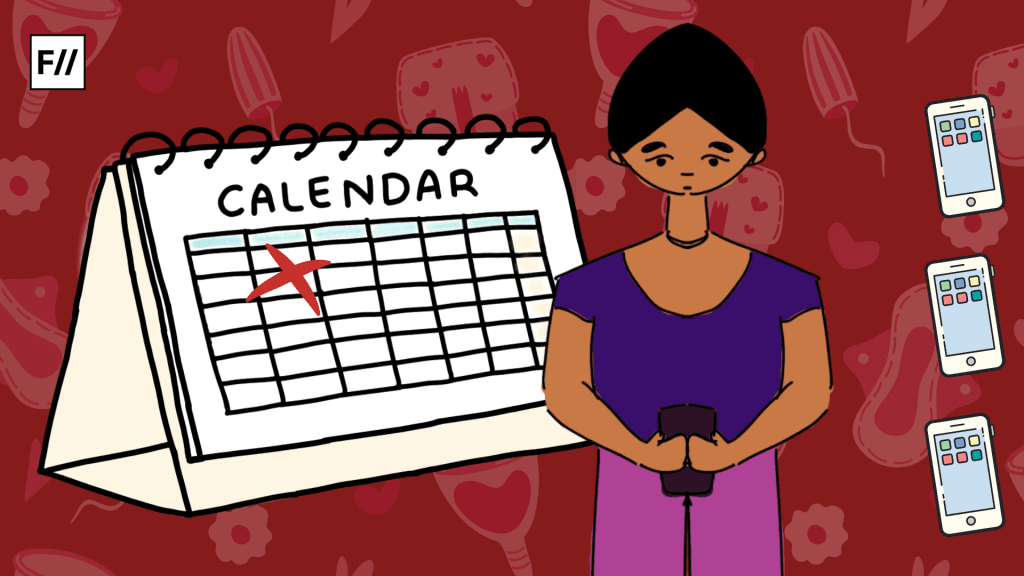
Importantly, postpartum complications can arise at any point and should not be dismissed. Warning signs include heavy vaginal bleeding (such as soaking through a pad in an hour), passing large clots, fever over 101°F (38°C), foul-smelling discharge, leg pain or swelling, persistent headaches, chest pain, and shortness of breath. C-section wounds may also become infected, showing signs such as pus or increasing redness and pain.
Many people struggle with body image changes due to weight fluctuations, stretch marks, or loose skin, aggravated by social shaming. Emotionally, the range is vast—many feel joy, love, and awe, while others experience sadness, anxiety, or even numbness. Baby blues affect many new mothers but typically resolve within two weeks.
A feminist lens forces us to ask: Why is the postpartum period so neglected, both in policy and popular discourse? Why is the labour of healing expected to be silent, private, and borne individually? The answer lies, in part, in how patriarchal systems treat caregiving as invisible labour and motherhood as a naturalised, passive state rather than a physically and emotionally complex experience.
However, postpartum depression and anxiety are more persistent and require medical support. Postpartum rage and even psychosis, while rare, are serious and potentially dangerous conditions that also demand clinical intervention. Emotional red flags include prolonged despair, panic attacks, intrusive thoughts, or detachment from the baby.
Self-care during postpartum is essential but challenging. Rest is paramount, yet often elusive due to infant care demands. Accepting help from partners, family, or community is key to recovery. This includes delegating chores, limiting visitors, and setting boundaries. Nutrition also plays a critical role: staying hydrated and eating balanced meals can support both physical healing and emotional resilience. Pelvic care, particularly after vaginal birth, involves gentle hygiene routines like rinsing with a peri bottle, using witch hazel pads, or cold packs. Resuming physical activity should only happen with medical clearance, and emotional support, through therapy, peer groups, or honest conversations—can be lifesaving.
Ultimately, the postpartum period is not a single, uniform experience but rather a series of transitions marked by fluctuating needs, emotions, and health concerns. Medical timelines, such as the six-week check-up, may offer one lens through which to view recovery, but they rarely capture the full scope of what new parents endure. Honouring both the clinical and lived realities of postpartum is critical for truly supporting people through this powerful and vulnerable chapter of life.
A feminist lens forces us to ask: Why is the postpartum period so neglected, both in policy and popular discourse? Why is the labour of healing expected to be silent, private, and borne individually? The answer lies, in part, in how patriarchal systems treat caregiving as invisible labour and motherhood as a naturalised, passive state rather than a physically and emotionally complex experience.
In most societies, women are celebrated during pregnancy, scrutinised during childbirth, and then swiftly forgotten once the baby arrives. The mother becomes a vessel—first to deliver life, then to sustain it—without attention to her own body’s needs. This erasure is even more acute for marginalised birthing persons, whose pain is disbelieved, whose access to care is limited, and whose narratives rarely enter the mainstream.
Call for change
India severely lacks resources to support new mothers during the postpartum period. Online communities, WhatsApp groups, and parenting apps are increasingly offering peer support and guidance. Regulated resources are insufficient and are far from being accessible to all. There’s an alarming gap in rural outreach, follow-up care, and cultural sensitivity in mental health services. Most schemes focus on childbirth outcomes rather than the full continuum of postpartum care, especially emotional and psychological well-being. Structural inequalities—ranging from caste and class to geographical location—further deepen this neglect.

What we need is a systemic shift that includes integrating postpartum mental health screenings into routine postnatal checkups, training frontline workers like ASHAs to recognise early signs of distress, expanding maternity leave policies to include emotional recovery, and investing in community-based postpartum support systems.
Recognising postpartum as a critical, life-altering phase—not a brief aftermath of childbirth—is essential for building a more compassionate society. Recovery doesn’t follow a fixed timeline, nor does it unfold in isolation. It requires networks of care, responsive systems, and above all, respect for the emotional labour of parenting.
If we treat birth with such ceremony, why do we greet motherhood with silence? Bringing visibility to the postpartum period is not just a matter of better health outcomes—it is a feminist imperative. To talk about postpartum is to talk about how we value (or devalue) rest, care, interdependence, and community. It is to challenge the medical-industrial complex that prioritises delivery over recovery and to dismantle social norms that idealise sacrifice and silence.
About the author(s)
She/they is an editor and illustrator from the suburbs of Bengal. A student of literature and cinema, Sohini primarily looks at the world through the political lens of gender. They uprooted herself from their hometown to work for a livelihood, but has always returned to her roots for their most honest and intimate expressions. She finds it difficult to locate themself in the heteronormative matrix and self-admittedly continues to hang in limbo
